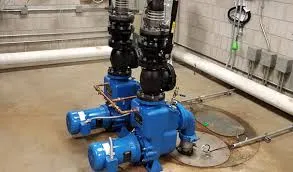Marathi
- Afrikaans
- Albanian
- Amharic
- Arabic
- Armenian
- Azerbaijani
- Basque
- Belarusian
- Bengali
- Bosnian
- Bulgarian
- Catalan
- Cebuano
- Corsican
- Croatian
- Czech
- Danish
- Dutch
- English
- Esperanto
- Estonian
- Finnish
- French
- Frisian
- Galician
- Georgian
- German
- Greek
- Gujarati
- Haitian Creole
- hausa
- hawaiian
- Hebrew
- Hindi
- Miao
- Hungarian
- Icelandic
- igbo
- Indonesian
- irish
- Italian
- Japanese
- Javanese
- Kannada
- kazakh
- Khmer
- Rwandese
- Korean
- Kurdish
- Kyrgyz
- Lao
- Latin
- Latvian
- Lithuanian
- Luxembourgish
- Macedonian
- Malgashi
- Malay
- Malayalam
- Maltese
- Maori
- Marathi
- Mongolian
- Myanmar
- Nepali
- Norwegian
- Norwegian
- Occitan
- Pashto
- Persian
- Polish
- Portuguese
- Punjabi
- Romanian
- Russian
- Samoan
- Scottish Gaelic
- Serbian
- Sesotho
- Shona
- Sindhi
- Sinhala
- Slovak
- Slovenian
- Somali
- Spanish
- Sundanese
- Swahili
- Swedish
- Tagalog
- Tajik
- Tamil
- Tatar
- Telugu
- Thai
- Turkish
- Turkmen
- Ukrainian
- Urdu
- Uighur
- Uzbek
- Vietnamese
- Welsh
- Bantu
- Yiddish
- Yoruba
- Zulu
Telephone: +86 13120555503
Email: frank@cypump.com
डिसेंबर . 06, 2024 23:25 Back to list
axial and mixed flow pumps
Axial and Mixed Flow Pumps A Comprehensive Overview
Pumps play a vital role in various industrial and municipal applications, serving as essential components for fluid transport, circulation, and management. Among the numerous types of pumps, axial and mixed flow pumps are particularly important due to their specific design characteristics and operational advantages. This article explores the fundamental principles, applications, advantages, and limitations of axial and mixed flow pumps, providing a comprehensive understanding of these two types of hydraulic machines.
Axial Flow Pumps Principles and Applications
Axial flow pumps, as the name suggests, facilitate fluid movement along the axis of the pump shaft. They employ a rotor equipped with blades that push the fluid in a direction parallel to the pump shaft, creating a continuous flow with relatively low pressure rise. The design typically incorporates a simple construction, with fewer moving parts, which enhances reliability and reduces maintenance costs.
One of the primary advantages of axial flow pumps is their high efficiency in moving large volumes of fluid at low heads. Due to their design, they are particularly well-suited for applications requiring significant flow rates, such as irrigation systems, drainage, and circulation in cooling water systems for power plants. Municipal waste treatment facilities also utilize axial flow pumps for the efficient transport of wastewater.
Despite their many advantages, axial flow pumps do have limitations. They are not designed for high-pressure applications and can experience issues with cavitation if operated beyond their designed parameters. Cavitation occurs when the pressure of the fluid falls below its vapor pressure, leading to the formation of vapor bubbles that can cause damage to the pump components over time.
Mixed Flow Pumps Characteristics and Uses
axial and mixed flow pumps

Mixed flow pumps combine features of both axial and radial flow pumps, allowing them to transfer fluid at an angle to the pump shaft. The design incorporates a rotor that produces both axial and radial motion, leading to a moderate pressure rise and flow rate. This unique configuration enables mixed flow pumps to handle a wider range of applications than axial flow pumps alone.
Mixed flow pumps are particularly advantageous in applications that require higher head compared to axial flow pumps while still necessitating reasonable flow rates. They find usage in various settings, including flood control, irrigation, municipal water supply, and hydroelectric power plants. The versatility of mixed flow pumps makes them a popular choice in numerous sectors.
One of the notable advantages of mixed flow pumps is their ability to operate at different flow rates and pressures, allowing for a more adaptable solution to varying operational conditions. However, they do come with their own set of limitations. Mixed flow pumps are generally more complex than axial flow pumps, often leading to higher initial costs and increased maintenance needs. Additionally, they may be less efficient than pure axial or radial flow pumps in specific applications.
Comparison and Conclusion
When comparing axial and mixed flow pumps, it is essential to consider the specific requirements of the application at hand. Axial flow pumps excel in situations where high flow rates at lower heads are needed, making them ideal for applications in irrigation, drainage, and wastewater management. Conversely, mixed flow pumps provide a balance of moderate flow rates and head, making them suitable for a broader range of industrial applications and municipal services.
In conclusion, both axial and mixed flow pumps offer unique advantages and disadvantages based on their design and operational principles. Understanding these differences enables engineers and decision-makers to select the most appropriate pump type for their specific needs, ensuring efficient fluid management and enhanced system performance. As technology continues to evolve, innovations in pump design may further enhance the capabilities and applications of both axial and mixed flow pumps, contributing to improved efficiency and sustainability in fluid transport solutions.
-
Heavy-Duty Mining Sludge Pumps - Wear-Resistant Slurry Handling
NewsAug.02,2025
-
Horizontal Split Case Pump with GPT-4 Turbo | High Efficiency
NewsAug.01,2025
-
ISG Series Pipeline Pump - Chi Yuan Pumps | High Efficiency, Durable Design
NewsAug.01,2025
-
Advanced Flue Gas Desulfurization Pump with GPT-4 Turbo | Durable & Efficient
NewsJul.31,2025
-
ISG Series Vertical Pipeline Pump - Chi Yuan Pumps | Advanced Hydraulic Design&Durable Construction
NewsJul.31,2025
-
ISG Series Vertical Pipeline Pump - Chi Yuan Pumps | Energy Efficient & Low Noise
NewsJul.31,2025










